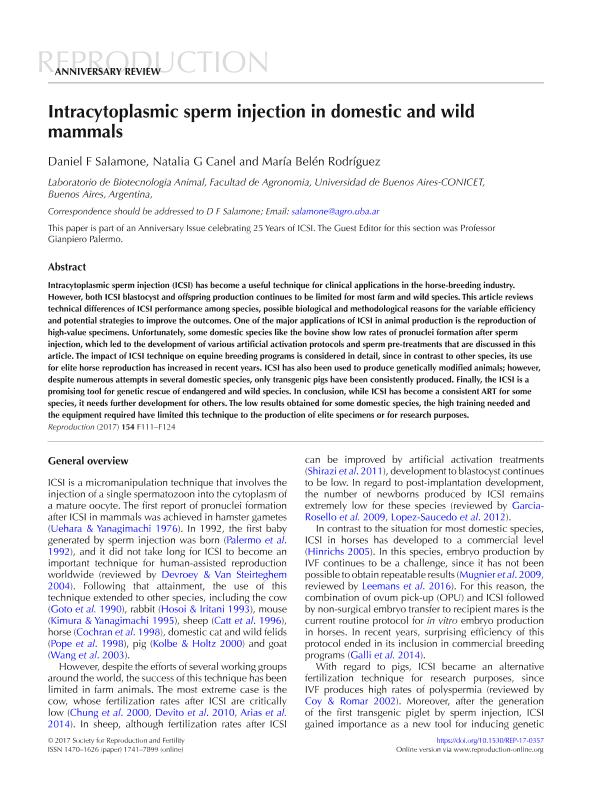Artículo
Intracytoplasmic sperm injection in domestic and wild mammals
Fecha de publicación:
12/2017
Editorial:
Elsevier
Revista:
Reproduction
e-ISSN:
1741-7899
Idioma:
Inglés
Tipo de recurso:
Artículo publicado
Clasificación temática:
Resumen
Intracytoplasmic sperm injection (ICSI) has become a useful technique for clinical applications in the horse-breeding industry. However, both ICSI blastocyst and offspring production continues to be limited for most farm and wild species. This article reviews technical differences of ICSI performance among species, possible biological and methodological reasons for the variable efficiency and potential strategies to improve the outcomes. One of the major applications of ICSI in animal production is the reproduction of high-value specimens. Unfortunately, some domestic species like the bovine show low rates of pronuclei formation after sperm injection, which led to the development of various artificial activation protocols and sperm pre-treatments that are discussed in this article. The impact of ICSI technique on equine breeding programs is considered in detail, since in contrast to other species, its use for elite horse reproduction has increased in recent years. ICSI has also been used to produce genetically modified animals; however, despite numerous attempts in several domestic species, only transgenic pigs have been consistently produced. Finally, the ICSI is a promising tool for genetic rescue of endangered and wild species. In conclusion, while ICSI has become a consistent ART for some species, it needs further development for others. The low results obtained for some domestic species, the high training needed and the equipment required have limited this technique to the production of elite specimens or for research purposes.
Archivos asociados
Licencia
Identificadores
Colecciones
Articulos(OCA PQUE. CENTENARIO)
Articulos de OFICINA DE COORDINACION ADMINISTRATIVA PQUE. CENTENARIO
Articulos de OFICINA DE COORDINACION ADMINISTRATIVA PQUE. CENTENARIO
Citación
Salamone, Daniel Felipe; Canel, Natalia Gabriela; Rodriguez, Maria Belén; Intracytoplasmic sperm injection in domestic and wild mammals; Elsevier; Reproduction; 154; 6; 12-2017; F111-F124
Compartir
Altmétricas




